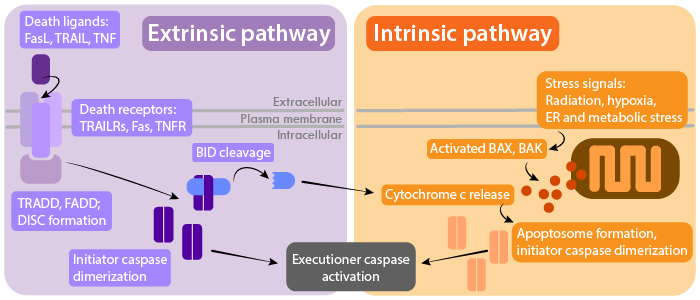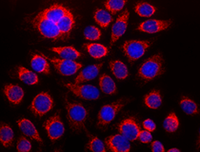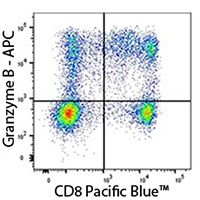Caspases, which carry out a series of cleavage events that signal for apoptosis, can be categorized into initiator and executioner caspases. When inactive, caspases are called procaspases. Initiator caspases are activated by dimerization, which is driven by several pathways described below. Dimerized initiator caspases will cleave and activate executioner caspases. Executioner caspases then go on to cleave a number of substrates, including cytoskeletal components, membrane proteins, and endonucleases, resulting in DNA destruction and cell death.


 Login/Register
Login/Register 









Follow Us